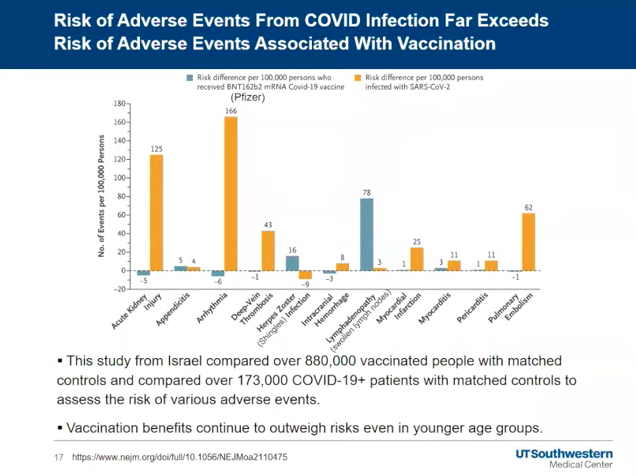Among a group of 25 people with low immunity, there is a 44 percent chance that one of those individuals has COVID-19 in Dallas County. In Tarrant County, that number is 50 percent. Balloon that room’s occupancy to 100 people and there is a 90 percent chance at least one person has COVID-19 in Dallas County and 93 percent in Tarrant County.
For parents thinking about their unvaccinated children spending time in 25-person classes and cafeterias with over 100, these numbers from a UT Southwestern community briefing are cause for worry. Every cough, sniffle, or fever is now treated with the utmost caution, and sending them to school is also putting them in harm’s way. While COVID-19 doesn’t impact children at the rates it does adults, the delta variant has pushed children’s hospitals to capacity throughout the summer.
Masking and testing can help, though many districts are locked in legal limbo with the state government regarding whether they can require it for their students and staff. UTSW modeling says that after about three months in school with low immunity levels without masking or testing, 91 percent of the students will be infected with the virus. With testing, that number goes down to 79 percent, and masking will mean just 49 percent will be infected in three months. If both are present, just 22 percent of children will be infected by that time. In schools where most students are under 12, there are low levels of immunity. A school with high levels of immunity, masking, and testing can keep infections as low as 13 percent, according to the UTSW models.
The good news? The vaccines are inching closer to being available to younger patients. The Pfizer and Moderna versions have been given Emergency Use Approval for children as young as 12, and there are trials underway for patients aged 5 to 11, 2 to 5, and six months to 2. The Johnson & Johnson vaccine will soon receive full approval from the FDA for patients as young as 18, and there are trials underway for patients as young as 12.
Many are hesitant about injecting something that hasn’t been around for long, but the data show COVID-19 is far more dangerous than the vaccine. A study of 880,000 vaccinated individuals and 173,000 of those with COVID-19 found that the risk of kidney damage and several heart conditions such as arrhythmia, myocarditis, and pulmonary embolism are much more common for those with COVID-19 than any vaccine. Shingles and swollen lymph nodes were more common in those who had been vaccinated, but those conditions are much less of a risk than others associated with the virus.
“The adverse events associated with the vaccine are much milder, less severe, and even fewer in number than the adverse events that can happen from somebody who becomes infected with COVID-19,” said UTSW Dr. Julie Trivedi, who is the medical director of infection prevention for the university hospitals and is an associate professor in the division of infectious diseases.

There have been very few reports of myocarditis in young adult and adolescent men after receiving the second Moderna and Pfizer doses. Still, those individuals recovered quickly and responded well to treatment, the CDC says.
In Dallas County, cases and hospitalizations seem to be leveling off. According to DFW Hospital Council CEO Steve Love, there are a little over 3,100 patients in North Texas hospitals with COVID-19, though that number has been trending down for about a week. COVID-19 patients make up about 20 percent of hospital patients, and there were 42 open intensive care unit beds in the region. Earlier this summer, ICU capacity was at or near zero for several days.
However, new daily deaths from COVID-19 will linger, as they usually lag a couple of weeks behind hospitalization numbers while the disease takes its toll. Vaccines are steadily ticking up—the state of Texas recently crested 50 percent vaccinated immunity—and availability for younger patients and full FDA approval will also help reduce the spread. President Biden’s latest vaccine and testing mandate for employers with over 100 people will also make a dent, he hopes.
UTSW’s latest models all predict a steep decline in cases later this fall, no matter our behavior. If vaccinations go up, masking continues, and social distancing sticks around, we could be past the peak already. “The profile of the pandemic is not inevitable,”said Dr. Daniel Podolsky, the president of UT Southwestern Medical Center. “It is influenced by a number of key variables that we collectively have the opportunity to influence.”





